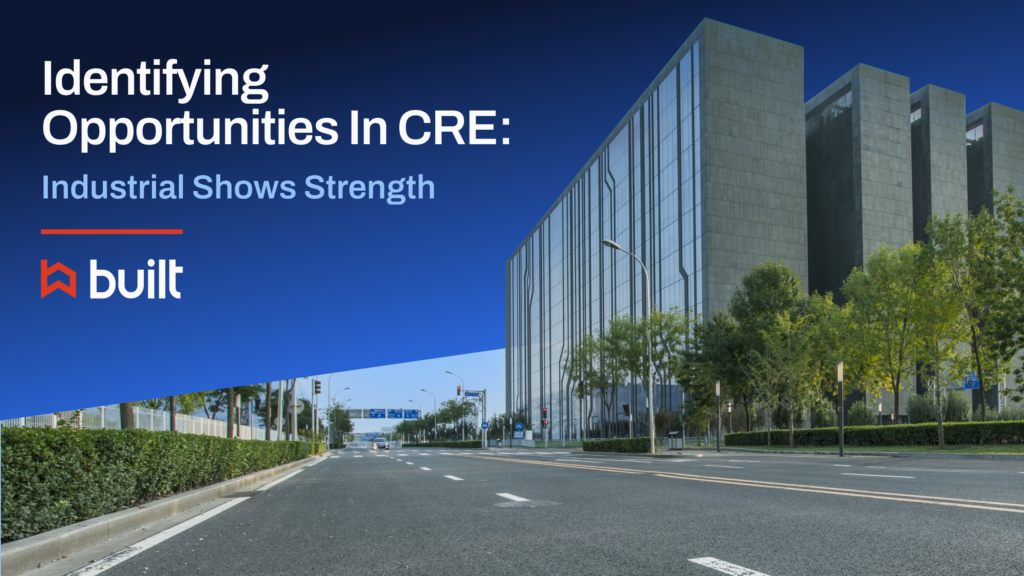
How Do Interest Rates Affect Commercial Real Estate and Construction?

In November, the Federal Reserve raised interest rates by 75 basis points, lifting the primary credit rates to 4%. This move would bring the effective interest rate from January 2022’s low of .08% to an expected high in the mid-4% range realized in 2023.
These rate hikes are meant to quell inflation and keep it low. But how will these interest rates affect commercial real estate and construction? While most folks understand the need to wrangle inflation, these higher interest rates may have serious impacts on our industry. Let’s look at what those impacts might be.
The cost of rising interest rates
Construction is a cash-hungry business, and contractors, real estate developers, and lenders work together to fuel it. Bringing a project from concept to delivery requires a lot of capital, and with interest rates rising, many are wondering how this will hit their wallets.
More expensive loans
As the Fed hikes the effective interest rates, the cost of borrowing money will also rise. Contractors who are used to borrowing money for their projects will now likely pay more for the capital they need to bring a project to delivery.
Less affordable projects
With the loans themselves costing more to secure, the size of the loans for contractors and developers may shrink. This leaves contractors with less financial assistance to rely on, and they may need to turn down projects that once felt more within their scope and comfort level.
Although inflation may reduce the cost of some materials, the higher interest rates paid to finance materials and labor may offset any savings.
Higher barrier to entry
When money is cheap—meaning interest rates are low—the possibilities seem endless. Contractors and developers expect growth and may find it easier to take more risks. However, with higher interest rates, the barrier to entry into commercial construction can feel higher. There are fewer players in the commercial real estate market that can afford to bankroll a job or secure enough capital to handle big-money projects.
It’s affecting lenders, too
The higher interest rates are impacting lenders as well. With higher interest rates, fewer clients are knocking on the big banks’ doors, causing the banks to scale back their willingness to lend on commercial projects.
Small, regional lenders are still issuing loans. Yet, these institutions are acting choosier in the projects they’ll fund, and the amount they’re willing to lend might not meet the needs of larger contractors.
Luckily, government rate hikes don’t impact alternative lending sources quite as heavily. Private lenders and investors may be willing to lend money a bit more freely for the right projects and contractors, though borrowers should still expect to pay higher-than-typical interest rates.
Effects on commercial construction businesses and investors
As rates climb toward a modern-day high-water mark, the landscape for commercial real estate is likely to change. Commercial construction businesses, real estate developers, and investors may face negative impact as well.
Second-guessing and project selection
With money being more expensive than it has been in recent years, many contractors and investors are starting to second-guess or closely scrutinize proposed contracts. Projects will need to be especially lucrative or secure for most parties to get involved, meaning many would-be real estate developers will need to adjust their timelines or expectations.
Reduced demand
One effect of the raising interest rates is a reduced demand for most commercial construction projects. Retail and hospitality were already challenging spaces, but the increased cost of borrowing will likely further reduce the demand for these projects. In short, many investors are holding on to their money rather than pursuing slim profit margins, while holding properties for extended periods after completion.
A shift in project types
It’s not all doom and gloom for commercial contractors, though. Some project types remain a bit easier when it comes to securing funding, though rates are still high. Projects like multifamily housing complexes, distribution centers, and infrastructure are still in demand, and banks may be more willing to lend to contractors and real estate developers who are shifting to these projects.
While the higher rates will reduce profit margins, these projects may be key for commercial real estate and construction companies while the government attempts to stabilize inflation.
Limiting the impact of rate hikes
Higher interest rates, like inflation, tend to leak into everything a business does, and we will likely see how interest rates affect commercial real estate and construction in the near term. However, there are some ways that lenders and contractors can reduce their impact.
While lending is always risky, higher interest rates should raise lenders’ awareness. Employing professional commercial real estate inspection services ensures that lenders know exactly how the project is progressing before a payment draw. These inspections prevent lenders from throwing good money after bad and limit their risk when cash is at a premium. Centralizing commercial loan management also gives lenders a better overview of their money and where it’s going.
Contractors need to manage risk as well. Managing trade partners like suppliers and subcontractors is critical. A keen understanding of subcontractors’ financial, safety, and performance statuses can help to protect the contractor’s project and timeline. Streamlining their payments with payment management helps ensure the project stays on track, reducing the chance of liens, delays, and unnecessary interest payments. With all the unknowns that interest rate hikes surface, technology solutions can help to add some stability amid the uncertainty.
Related Posts


Built Names Chris DeVito as Vice President of Product







